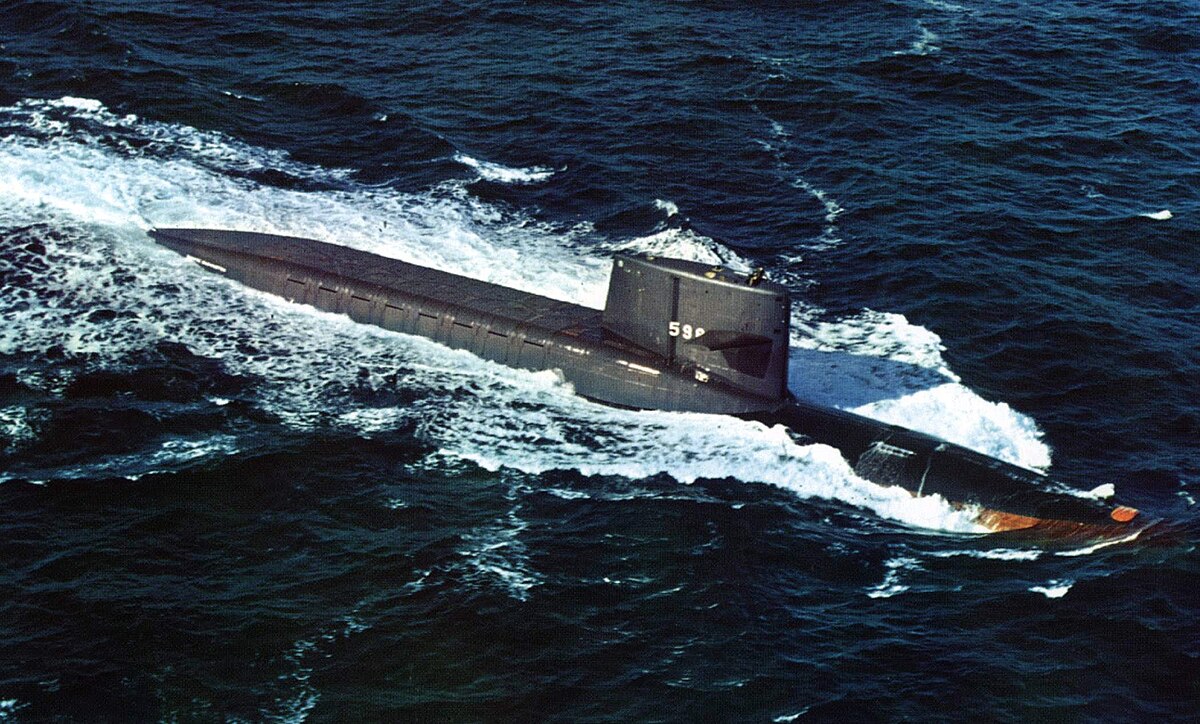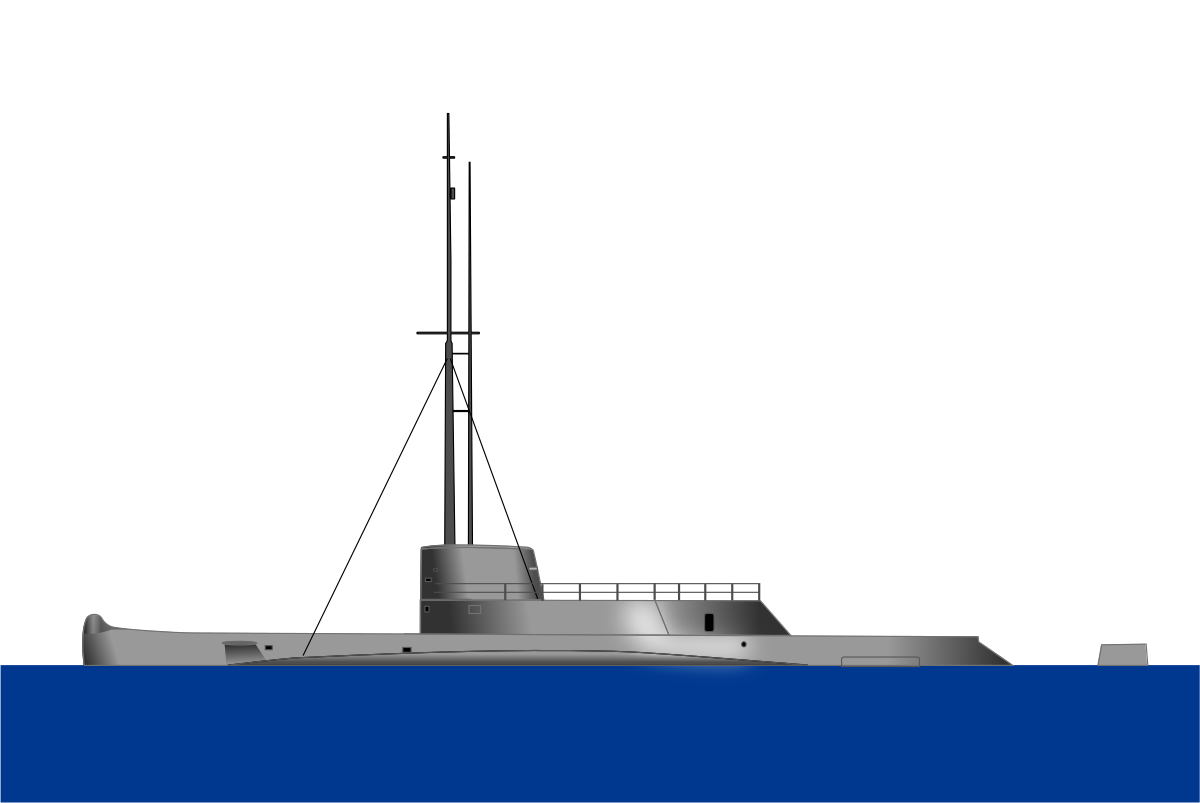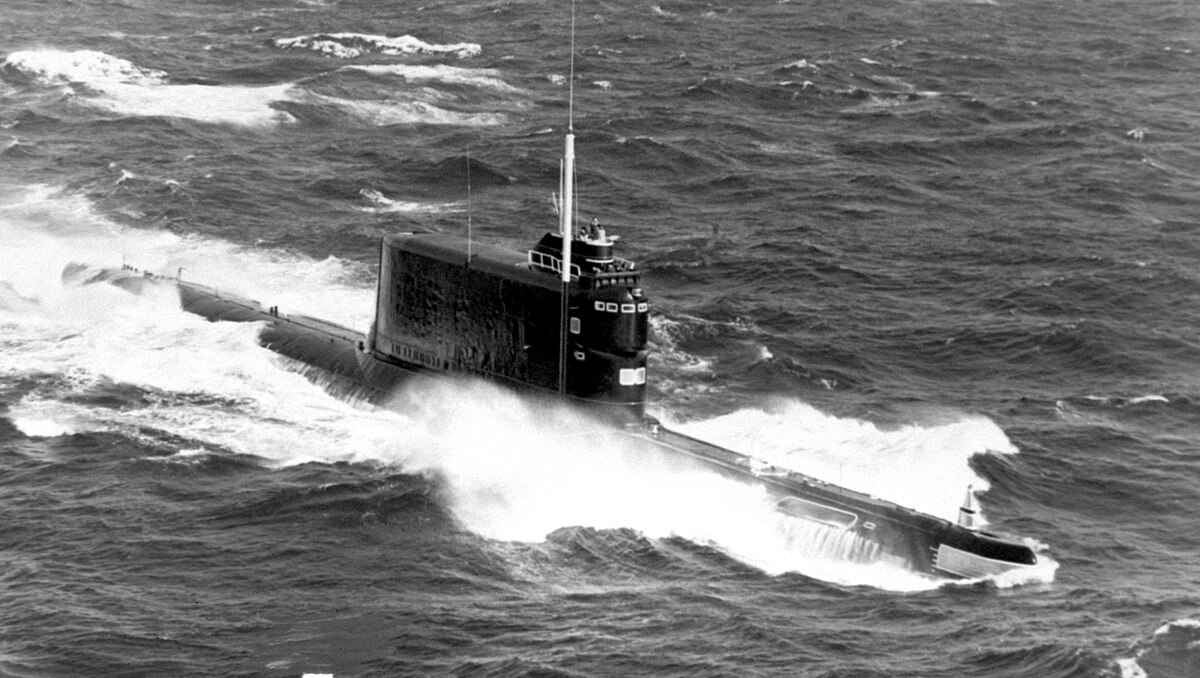Unfortunately in this case the UK domestic situation trumps everything else.
Is Donald included ? qwaaaaack qwaaack !
Unfortunately in this case the UK domestic situation trumps everything else.
'63 and the facilities would be well along, as would the system. '65 (for all practical purposes) would be the ISD (IOC) for the system, ergo Too Far Gone to Cancel.Unfortunately in this case the UK domestic situation trumps everything else. The Conservatives were soon to be mired in political and economic crises.. A new leader took over from Macmillan in 1963 and then lost to Labour in an election in which Labour fought on the need to reduce defence spending. In 1964 this government begins canceling major projects and had promised to get rid of Polaris. It manages to limit this to canceling the fifth boat (largely because the PM and Defence Secretary realised the importance of the relationship with the US). A bloated UK only programme would have been an easy target. We also know now that had the Conservatives won, the state of the economy would have forced them to find defence cuts.
France by contrast was enjoying a good period under De Gaulle and believed in strong governmental support for industry.
The poor state of the UK economy and industry is structural and an alternative history would have to be drastic to the point of fantasy.
As for the Cuban Missile Crisis public opinion in the UK simply breathed a sigh of relief it was over.
You miss my point.
Dreadnought does not enter service until 1963. Valiant not until 1966.
and remember, the weapons bay of the Resolution class was developed and provided by the US. It had already proved itself on the George Washington class.



Could it related the Cheveline?I noticed some comments in the referenced threads asking about the length of the Westcott 54 inch demonstrator. There’s not too much to go on;- From C Gibson’s “It weighed in at 4,300kg and the case was helically welded steel and the charge was CD119.“
now compare that the Polaris A1 first stage (54inch);-
“The first stage (18,400 lb <8300kg>) had a steel motor case; polyurethane propellant (15,200 lb) with ammonium percholorate (oxidizer) and aluminum additives.“
and the second stage (54 inch)
The second stage (9,400 lb <4264Kg>) also used a steel motor case; polyurethane propellant (7,300 lb) with ammonium perchlorate (oxidizer) and aluminum additives.
From;- https://www.globalsecurity.org/wmd/systems/a-1.htm
So the Westcott 54inch would have almost identical dimensions to Polaris A1 second stage. I reckon that would make it about 70-75inches long.
Given it’s timing I would suggest the purpose was to demonstrate the ability to produce a suitable solid fuel solution in the event the Subs were at the dockside and the US refused to release the missiles. The choice of second stage is probably because it’s a more manageable lash up with what’s available at a lower costs. I would love to know what CD119 was?
1968 Mao gets a meeting of the PRC top nuclear scientists and tell them about a bold idea of his.
"We could get ten guys with ten suitcase nukes and blast Moscow, Paris, New York, L.A and some other decadent imperialist cities. Any objection to my bold plan ?"
"Oh no, great leader. Fantastic ideas" they all congrulate him. Except for a small chap with thick glasses who dares to rise an objection.
"Great leader, your plan is great, but we can't make it happen."
Mao snaps "Whaaaat, any lack of candidates ?"
"No, no problem, slaps your finger, we get ten million men willing to brings the suitcase nukes."
"So, what's the problem ? can't you build suitcase nukes ?"
"Oh, no problem there."
"So what the problem in the end, you miserable worm ?"
"It about the suitcases, great leader. No way we can find ten of them in the entire PRC."
----------------
Another good one "Before Mao come the PRC was standing at the edge of an abyss. Luckily enough, then was The Great Leap Forward."
----------------
Way too early.CCould it related the Cheveline?I noticed some comments in the referenced threads asking about the length of the Westcott 54 inch demonstrator. There’s not too much to go on;- From C Gibson’s “It weighed in at 4,300kg and the case was helically welded steel and the charge was CD119.“
I don’t understand North Korea fascination with rockets/submarines etc to deliver thier nuclear weapons, very last century;- If it were me, I would just DHL it, with a GPS hooked up to arduino to pop it off at the delivery address......simples.1968 Mao gets a meeting of the PRC top nuclear scientists and tell them about a bold idea of his.
"We could get ten guys with ten suitcase nukes and blast Moscow, Paris, New York, L.A and some other decadent imperialist cities. Any objection to my bold plan ?"
"Oh no, great leader. Fantastic ideas" they all congrulate him. Except for a small chap with thick glasses who dares to rise an objection.
"Great leader, your plan is great, but we can't make it happen."
Mao snaps "Whaaaat, any lack of candidates ?"
"No, no problem, slaps your finger, we get ten million men willing to brings the suitcase nukes."
"So, what's the problem ? can't you build suitcase nukes ?"
"Oh, no problem there."
"So what the problem in the end, you miserable worm ?"
"It about the suitcases, great leader. No way we can find ten of them in the entire PRC."
----------------
Another good one "Before Mao come the PRC was standing at the edge of an abyss. Luckily enough, then was The Great Leap Forward."
----------------
Also note that the Chinese got their A-bomb in '64 thus 4 years after Gerboise Bleue (1960). Yet in a stunning - and mostly unexplicable - twist, they detonated a H-bomb only three years later ! You guess, De Gaulle was incensed, and French nuclear scientists working on Canopus got a very bad time.
Canopus was finally detonated in August 1968 in Moruroa, 14 months after the chinese did it. How did they pull it o
Also note that the Chinese got their A-bomb in '64 thus 4 years after Gerboise Bleue (1960). Yet in a stunning - and mostly unexplicable - twist, they detonated a H-bomb only three years later ! You guess, De Gaulle was incensed, and French nuclear scientists working on Canopus got a very bad time.
Canopus was finally detonated in August 1968 in Moruroa, 14 months after the chinese did it. How did they pull it o
I guess the scientists not attempting to nuke the politicians helped. I do wonder what effect the disaster with the 62 Beryl shot had on the working environment within in the French program.
Béryl incident - Wikipedia
en.m.wikipedia.org
I don’t understand North Korea fascination with rockets/submarines etc to deliver thier nuclear weapons, very last century;- If it were me, I would just DHL it, with a GPS hooked up to arduino to pop it off at the delivery address......simples.1968 Mao gets a meeting of the PRC top nuclear scientists and tell them about a bold idea of his.
"We could get ten guys with ten suitcase nukes and blast Moscow, Paris, New York, L.A and some other decadent imperialist cities. Any objection to my bold plan ?"
"Oh no, great leader. Fantastic ideas" they all congrulate him. Except for a small chap with thick glasses who dares to rise an objection.
"Great leader, your plan is great, but we can't make it happen."
Mao snaps "Whaaaat, any lack of candidates ?"
"No, no problem, slaps your finger, we get ten million men willing to brings the suitcase nukes."
"So, what's the problem ? can't you build suitcase nukes ?"
"Oh, no problem there."
"So what the problem in the end, you miserable worm ?"
"It about the suitcases, great leader. No way we can find ten of them in the entire PRC."
----------------
Another good one "Before Mao come the PRC was standing at the edge of an abyss. Luckily enough, then was The Great Leap Forward."
----------------
Sorry for the drift.
I think that's one outcome.A few actual events:
The Royal Navy was writing papers about what a UK Polaris SSBN fleet would look like in late 1959
Blue Streak was formerly cancelled in April 1960.
At a meeting to discuss the Skybolt warhead in May 1960 several UK lightweight warheads are discussed
A 54 inch solid motor is fired at Westcott in June 1965
HMS Resolution fires her first Polaris missile in February 1968
With that in mind, perhaps we could imagine, in a world of higher funding and different decisions, instead of adopting Skybolt after the cancellation of Blue Streak and Blue Steel Mk.II a UK solid fuel SLBM is pursued and is ultimately able to enter service on roughly the same timeline as Polaris did with the RN. Given the ranges required from a missile to reach targets in Russia proper from the UK such a missile could be bi-service, with some deployed in silos in Eastern England as part of Bomber Command in addition to those deployed on RN submarines from Scotland.
I think that's one outcome.A few actual events:
The Royal Navy was writing papers about what a UK Polaris SSBN fleet would look like in late 1959
Blue Streak was formerly cancelled in April 1960.
At a meeting to discuss the Skybolt warhead in May 1960 several UK lightweight warheads are discussed
A 54 inch solid motor is fired at Westcott in June 1965
HMS Resolution fires her first Polaris missile in February 1968
With that in mind, perhaps we could imagine, in a world of higher funding and different decisions, instead of adopting Skybolt after the cancellation of Blue Streak and Blue Steel Mk.II a UK solid fuel SLBM is pursued and is ultimately able to enter service on roughly the same timeline as Polaris did with the RN. Given the ranges required from a missile to reach targets in Russia proper from the UK such a missile could be bi-service, with some deployed in silos in Eastern England as part of Bomber Command in addition to those deployed on RN submarines from Scotland.
What might make it possible even with OTL wider financial constraints is just down to a series of small-ish Alternative Events.
Rocket fuel.
Warhead development.
Submarines
That said warhead designers were not communicating to anyone much and this caused some issues with the V-Bomber designers.
Curious thought.....wouldn't the design and cost of a silo be less, if it's designed around something like Polaris?
What makes the Blue Streak silo design expensive is both the size of the missile (volume of concrete needed) and the ancillary equipment (also needing lots of concrete to house it). Something like Polaris could maje a limited number of silos affordable.
What would support this is the inherently greater accuracy achievable with a fixed site.
This might....spiral into a tri-service program, but hit the buffers in '65 and only the SSBN continues.
At least some early SSBN designs had to surface before launching. So it's not a givenI think that's one outcome.A few actual events:
The Royal Navy was writing papers about what a UK Polaris SSBN fleet would look like in late 1959
Blue Streak was formerly cancelled in April 1960.
At a meeting to discuss the Skybolt warhead in May 1960 several UK lightweight warheads are discussed
A 54 inch solid motor is fired at Westcott in June 1965
HMS Resolution fires her first Polaris missile in February 1968
With that in mind, perhaps we could imagine, in a world of higher funding and different decisions, instead of adopting Skybolt after the cancellation of Blue Streak and Blue Steel Mk.II a UK solid fuel SLBM is pursued and is ultimately able to enter service on roughly the same timeline as Polaris did with the RN. Given the ranges required from a missile to reach targets in Russia proper from the UK such a missile could be bi-service, with some deployed in silos in Eastern England as part of Bomber Command in addition to those deployed on RN submarines from Scotland.
What might make it possible even with OTL wider financial constraints is just down to a series of small-ish Alternative Events.
Rocket fuel.
Warhead development.
Submarines
That said warhead designers were not communicating to anyone much and this caused some issues with the V-Bomber designers.
Curious thought.....wouldn't the design and cost of a silo be less, if it's designed around something like Polaris?
What makes the Blue Streak silo design expensive is both the size of the missile (volume of concrete needed) and the ancillary equipment (also needing lots of concrete to house it). Something like Polaris could maje a limited number of silos affordable.
What would support this is the inherently greater accuracy achievable with a fixed site.
This might....spiral into a tri-service program, but hit the buffers in '65 and only the SSBN continues.
Presumably a land based silo that is going to launch a missile that will also be launched by a submarine, or surface ship, will be different from one that would launch a missile that was only to be launched from a land based silo?
This rather suggests that this AH scenario is quite realistic. OTL things were progressing in the right direction, but needed more effort earlier.,
Actually, there was quite a lot of work going on by the Navy at Harwell in the mid-1950s. If I may quote from my book, "An Atomic Empire":
A Naval Section was then set up at Harwell with Captain Harrison-Smith as Senior Naval Representative. This section was gradually expanded, so that by the autumn of 1955, there were 12 staff working on the project, but by 1957, there were 16 members of the Royal Naval Scientific Service, 14 employees from Rolls Royce, 22 from Vickers, 5 from Foster-Wheeler, 6 Naval officers, 1 Constructor Officer, and 3 Draughtsman attached to the Naval Section, with 40 AERE Scientific and Experimental grades and around 23 similar grades working in the Industrial Group at Risley. Including members of staff working in the Admiralty Design Department, a total of around 160 professional staff were involved.
There was also considerable work going on concerning pressurised water reactors. There is a very lengthy paper in the National Archives describing the work that was done.
